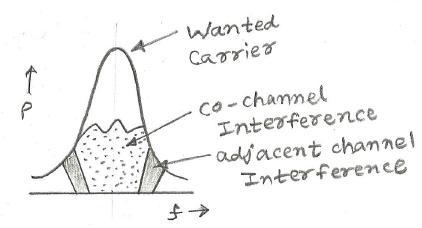Understanding Interference Types in Communication Systems
Advertisement
Interference is a common problem in communication systems, potentially degrading signal quality and disrupting operations. Common types of interference include inter-symbol interference (ISI), co-channel interference, and adjacent channel interference.
This guide discusses the causes and effects of these types of interference, along with methods to mitigate these challenges.
Radio frequency (RF) interference occurs when one RF signal interferes with another. RF interference is increasingly prevalent as more cellular standards operate in the same region. For example, GSM, WCDMA, WiMAX, and LTE cells may all be present in one location. Systems or multi-mode modems are designed to mitigate or reduce the effects of RF interference from one system/RAT (radio access technology) to another. As mentioned, RAT can be any technology such as WiMAX, WLAN, Zigbee, GSM, CDMA, HSPA, LTE, etc.
Here are some of the major types of interference:
Inter-Symbol Interference (ISI)

Due to delay spread, the transmitted symbol spreads out in the time domain. This spreading causes two consecutive symbols to bleed energy into each other, leading to ISI (Inter Symbol Interference).
Co-Channel RF Interference

Co-channel interference is caused by two users operating at the same frequency but located at a distance from each other. This occurs due to the reuse of the same frequency in two GSM, WCDMA, or LTE cells separated by some distance. This reuse can cause interference to a mobile device served by a distant cell.
To effectively reuse the precious frequency spectrum, telecom operators perform RF planning and carefully manage power levels to prevent one cell’s signal from interfering with another’s signal on the same band. Improperly maintained levels will create problems, as the interfering signal can easily pass through RF filters since it resides within the filter’s passband.
Adjacent Channel RF Interference
Adjacent channel interference is caused by signals in the adjacent frequency channel, near the desired carrier frequency.
This happens when two frequencies are allocated to different mobile devices, but poor filtering and non-linearity cause one frequency to radiate into the spectrum of the other, causing adjacent channel interference.
To avoid this, proper radio frequency planning with appropriate guard bands between carriers is essential.
Conclusion
Addressing interference types such as inter-symbol, co-channel, and adjacent channel interference is essential for robust communication systems. Implementing effective mitigation strategies can significantly improve signal quality and reliability.
 RF
RF
